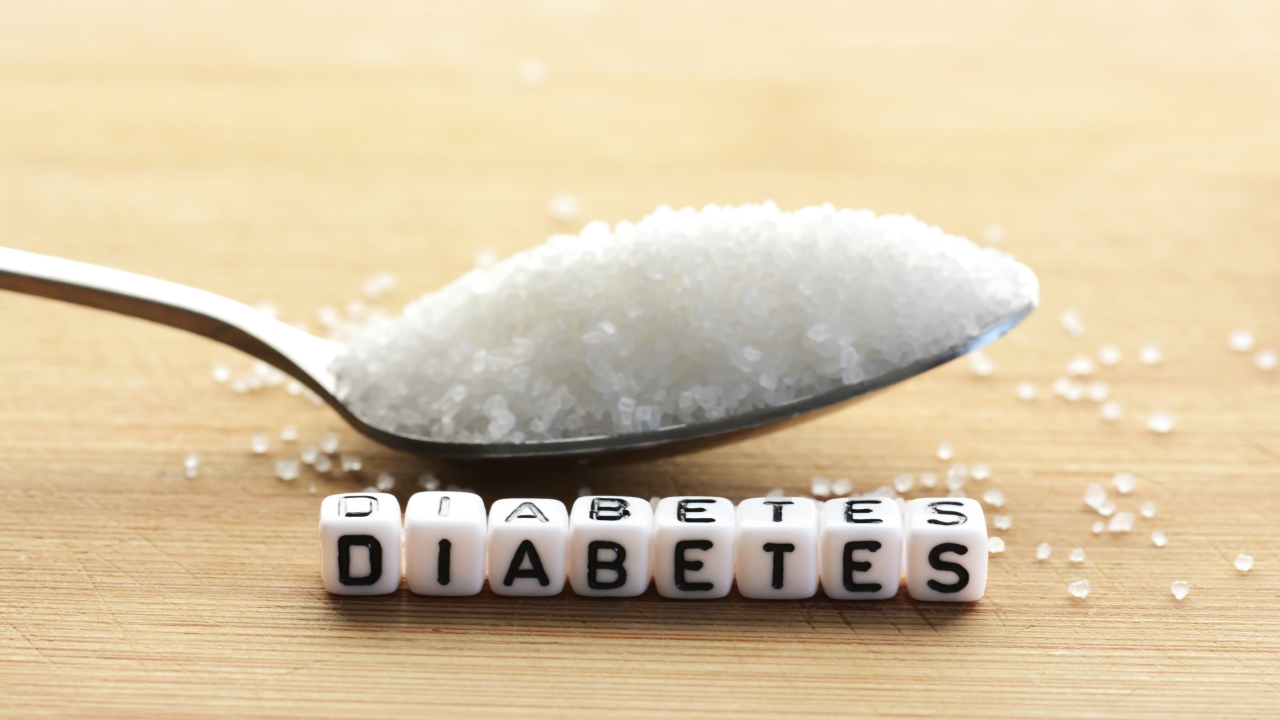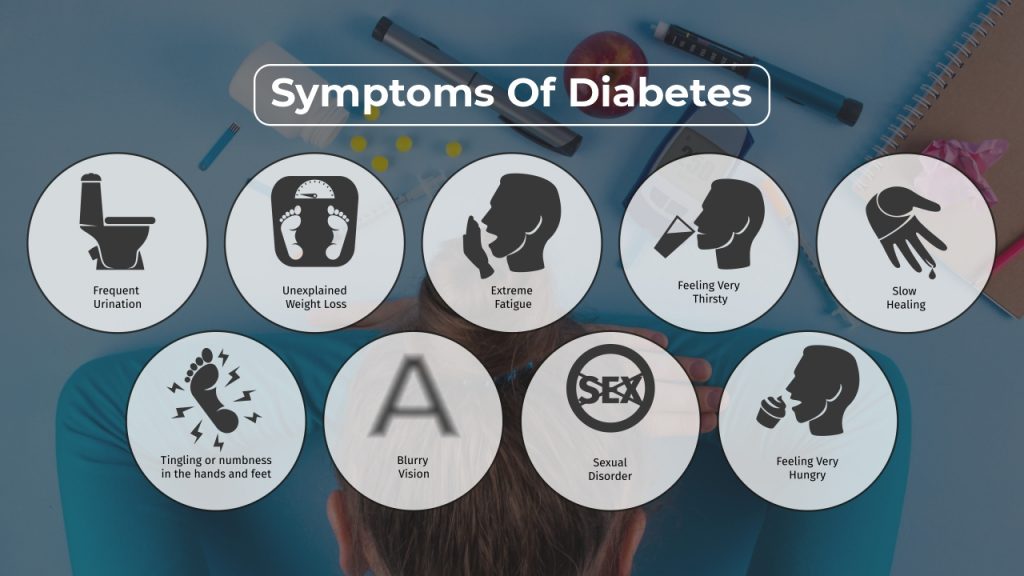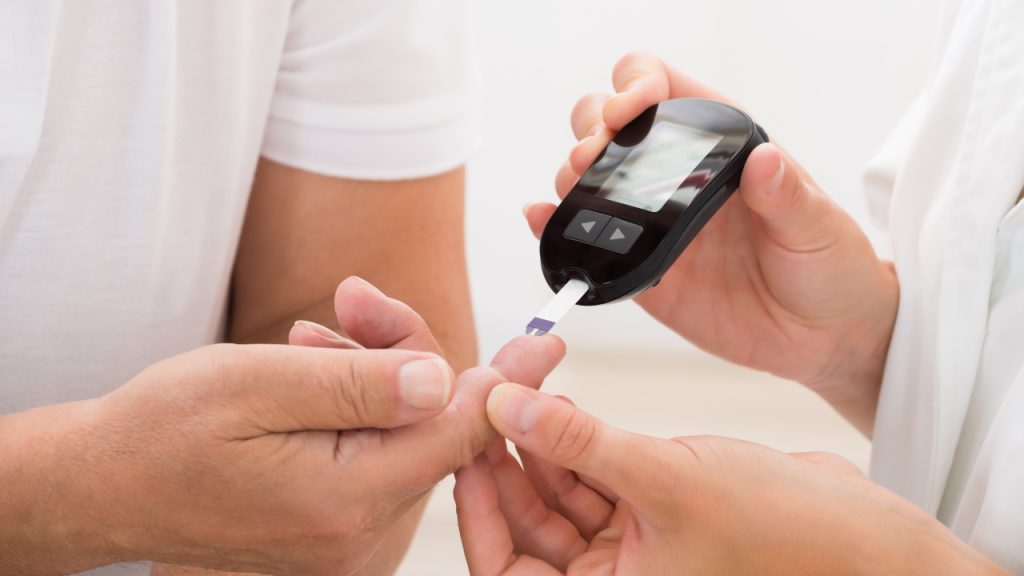
Type 2 Diabetes: Causes, Diagnosis and Treatment

Diabetes mellitus, commonly known as diabetes, is a disease characterized by hyperglycemia. This refers to high levels (hyper) of glucose in the blood (glycemia). There are two main types of diabetes mellitus — type 1 and type 2.
Type 1 diabetes occurs in children and adolescents. The main problem with type 1 diabetes is the reduced or complete absence of production of the glucose-lowering hormone called insulin. Insulin is produced by a gland called the pancreas in the body. About 5 to 10% of diabetic people have type 1 diabetes. They have to be on insulin replacement therapy throughout their lives.
The most common is type 2 diabetes, affecting about 90 to 95% of diabetics. This is seen in older adults and results from the reduced effect of insulin in lowering the blood glucose levels. Type 2 diabetes is commonly associated with obesity and a sedentary lifestyle.
Gestational diabetes is the third type. It may occur during pregnancy, when women may develop high blood sugar levels due to hormones produced by the placenta. If the body cannot produce sufficient or enough insulin to regulate the high blood sugar levels, it results in gestational diabetes. In most cases, blood glucose levels normalize after delivery. However, some women may develop type 2 diabetes after delivery.
Type 2 diabetes is manageable with a little effort and discipline. Let’s find out more about it.
What is type 2 diabetes?
In a healthy individual, insulin lowers blood glucose levels by various mechanisms such as increased protein synthesis and entry of glucose from the blood into the fat and muscle cells. This also helps in the conversion of glucose to a stored form called glycogen.
In type 2, the cells of the body resist insulin actions, thereby not allowing glucose to enter the cells. This leads to higher glucose levels in the blood. Excess glucose damages various organs and triggers mechanisms that cause other hormonal imbalances. The reduced supply of glucose can also break down cells. Type 2 diabetes develops over years and is diagnosed in adulthood.
It is possible to prevent or delay it through lifestyle changes such as maintaining optimum weight, eating healthy, and staying active

What are the risk factors for type 2 diabetes?
While the exact cause of type 2 diabetes is unknown, here are some risk factors associated with it.
Family history: If your parents have diabetes and were diagnosed with it at a young age, there’s a good chance of you getting type 2 diabetes.
Genetics: Genetic mutations may lead to abnormal production of enzymes related to the metabolism of glucose, and this may cause diabetes.
Lifestyle: Obesity contributes to approximately 55% of type 2 diabetes cases. Getting little or no exercise, unhealthy eating habits, smoking, and alcohol are other lifestyle factors, which predispose an individual to develop type 2 diabetes.
Age: The risk of type 2 diabetes increases as you get older, especially after the age of 45. This is because people tend to exercise less, lose muscle mass and gain weight as they age. It is also a combined effect of increasing insulin resistance and impaired pancreatic function associated with aging.
Environmental factors: Stressful living, anxiety disorders, poor sleep contribute to the development of diabetes by increasing the levels of the “stress hormone” called cortisol. The main role of cortisol is to keep the body ready for action during any imminent danger (fight or flight) response. Such an activity will require readily available glucose as fuel. So high levels of cortisol negate all actions of insulin and cause hyperglycemia. A chronic high level of cortisol produces a type 2 diabetes-like situation in the body.
Metabolic syndrome: It can be caused by a cluster of conditions such as insulin resistance, high blood pressure, increased fat around abdominal organs, high levels of triglycerides, and low levels of HDL (good) cholesterol. If any one of these conditions already exists in the body, others will eventually follow if you don’t take preventive measures.
Other hormonal influences: Thyroid disorders, imbalance in levels of female hormones (estrogen and progesterone), and diseases causing excessive secretion of cortisol from adrenal glands are important causes of metabolic imbalances and weight gain. These disorders mimic diabetes and have to be factored in while looking for causes of hyperglycemia.
Prediabetes
Prediabetes is a condition where blood glucose levels are higher than accepted values but without overt symptoms. This condition can last many months before the symptoms manifest themselves.
Prediabetes is likely to happen if you:
- Are above 45 years of age
- Eat a lot of processed meat, drink sugary beverages
- If your diet lacks adequate fruits, vegetables, nuts, whole grains, or healthy oils
- Have a waist circumference of more than 40 inches (men) and 35 inches (women)
- Have a BMI above the normal range
- Have high triglycerides and LDL (bad) cholesterol levels or low HDL cholesterol levels
- Have a sedentary lifestyle
- Have a history of gestational diabetes
- Have inconsistent sleep or anxiety issues
Diagnosis of diabetes
The diagnostic criteria for diabetes are set and updated regularly by the American Diabetes Association (ADA), which is the internationally recognized body for setting diagnosis and treatment guidelines for all types of diabetes.
Diagnosis of diabetes includes the following tests:
1. Blood glucose levels in the fasting state and two hours after food or postprandial blood glucose levels are assessed. Variations of this test, Oral Glucose Tolerance Test (OGTT), and Glucose Tolerance Test (GTT) may be done in special cases like pregnancy, or for detecting less common forms of diabetes. A random blood glucose test may indicate diabetes. But, follow it up with confirmatory tests.
2. HbA1c test, which assesses the percentage of glucose bound to hemoglobin over the past 3 months.
3. Urine tests to check if sugar is being passed out by kidneys.
4. Ultrasound of abdomen to look for any abnormality of the pancreas.
5. Other tests depending on the history and risk factors.
| Type of test | Normal | Prediabetes | Diabetes |
| Random blood sugar levels (mg/dL) | Less than 200 | N/A | 200 or more |
| Fasting glucose levels (mg/dL) | Less than 100 | 100 to 125 | 126 or more |
| Postprandial glucose (mg/dL) | Less than 140 | 140 to 199 | 200 or more |
| HbA1c (%) | Less than 5.7 | 5.7 to 6.4 | 6.5 or more |

Managing diabetes
Depending on the severity of the condition and other factors, exercise, diet, and medications are prescribed. Diet and exercise form a major part of the treatment strategy for type 2 diabetes mellitus. Medicines called Oral Hypoglycemic Agents (OHAs) are given initially for mild to moderate cases. In cases of uncontrolled diabetes, insulin injections and insulin pumps may be prescribed to manage the condition and avoid complications.
Role of physical activity
1. 30 to 45 mins a day of moderate-intensity aerobic activity improves insulin-dependent and insulin-independent pathways of glucose transport. When you exercise, glucose enters muscle cells without the help of insulin. This helps in lowering glucose in the blood and utilization of glucose by the cell.
2. Regular exercise also helps in weight management and lowering bad cholesterol and triglyceride levels in the blood. It can strengthen the heart muscles and lower blood pressure as well.
3. Dopamine, serotonin, and endorphins are released when you workout. This improves mood, physical efficiency as well as cognitive functioning.
4. Low to moderate-intensity aerobic exercises like walking, jogging, yoga, swimming, Tai-chi, and dancing are highly recommended.
5. Exercise for at least 50 minutes a day for 5 days a week for optimal benefit.
Role of diet
Diet and exercise are the cornerstones of management of diabetes. A diabetic diet should include:
1. Fruits and non-starchy vegetables like carrots, beans, and green leafy vegetables
2. Lean protein like eggs, skinless chicken, and fish
3. Low-fat milk and milk products
4. Pulses
5. Complex sources of carbohydrates like whole wheat and millets should be combined with healthy sources of fat and fiber. Glucose is then released slowly into the bloodstream, without causing unwanted spikes. It also lowers cholesterol levels.
6. Opt for whole grains and millets instead of processed foods and white bread
7. Nuts and seeds in moderation
Diabetics should completely avoid:
- Refined sugars
- Carbonated drinks
- Added salt in the food
- Smoking
- Alcohol
The “diabetes plate method” is an easy way to ensure you consume an adequate proportion of the various food groups. It’s a regular 9-inch plate, designed to contain food with the optimal quantity of nutrients required by the body.
Don’t start a diet without consulting a qualified dietician, who will consider factors like your weight, current physical activity, and other coexisting conditions. These factors may affect not just your blood glucose but other nutrient levels as well.
Type 2 diabetes mellitus is a lifestyle disease, which affects multiple systems of the body. It can be managed by maintaining a healthy weight, consuming a well-balanced diet based on fruits, vegetables, and lean proteins. If you have type 2 diabetes, follow the advice of a physician, a qualified exercise expert, and a dietician to maintain long-term control over glucose levels and avoid complications.
References
1. Consortium I, Scott RA, Langenberg C, et al. The link between family history and risk of type 2 diabetes is not explained by anthropometric, lifestyle or genetic risk factors: the EPIC-InterAct study. Diabetologia. 2019; 56: 60–9.
2. Dendup T, Feng X, Clingan S, et al. Environmental Risk Factors for Developing Type 2 Diabetes Mellitus: A Systematic Review. Int J Environ Res Public Health. 2019; 15: 78.
3. Blood sugar levels. Diabetes.co.uk. 2019. https://www.diabetes.co.uk/diabetes_care/blood-sugar-level-ranges.html (accessed Feb 16, 2021).
4. Type 2 diabetes. Mayo Clinic. https://www.mayoclinic.org/diseases-conditions/type-2-diabetes/diagnosis-treatment/drc-20351199 (accessed Feb 16, 2021).
5. Turner G, Quigg S, Davoren P, et al. Resources to Guide Exercise Specialists Managing Adults with Diabetes. Sport Med Open 2019; 5: 20.
6. Risérus U, Willett WC, Hu FB. Dietary Fats and Prevention of Type 2 Diabetes. Prog Lipid Res 2009; 48: 44–51.
7. Colberg SR, Sigal RJ, Yardley JE, et al. Physical Activity/Exercise and Diabetes: A Position Statement of the American Diabetes Association. Diabetes Care 2016; 39: 2065–79.














